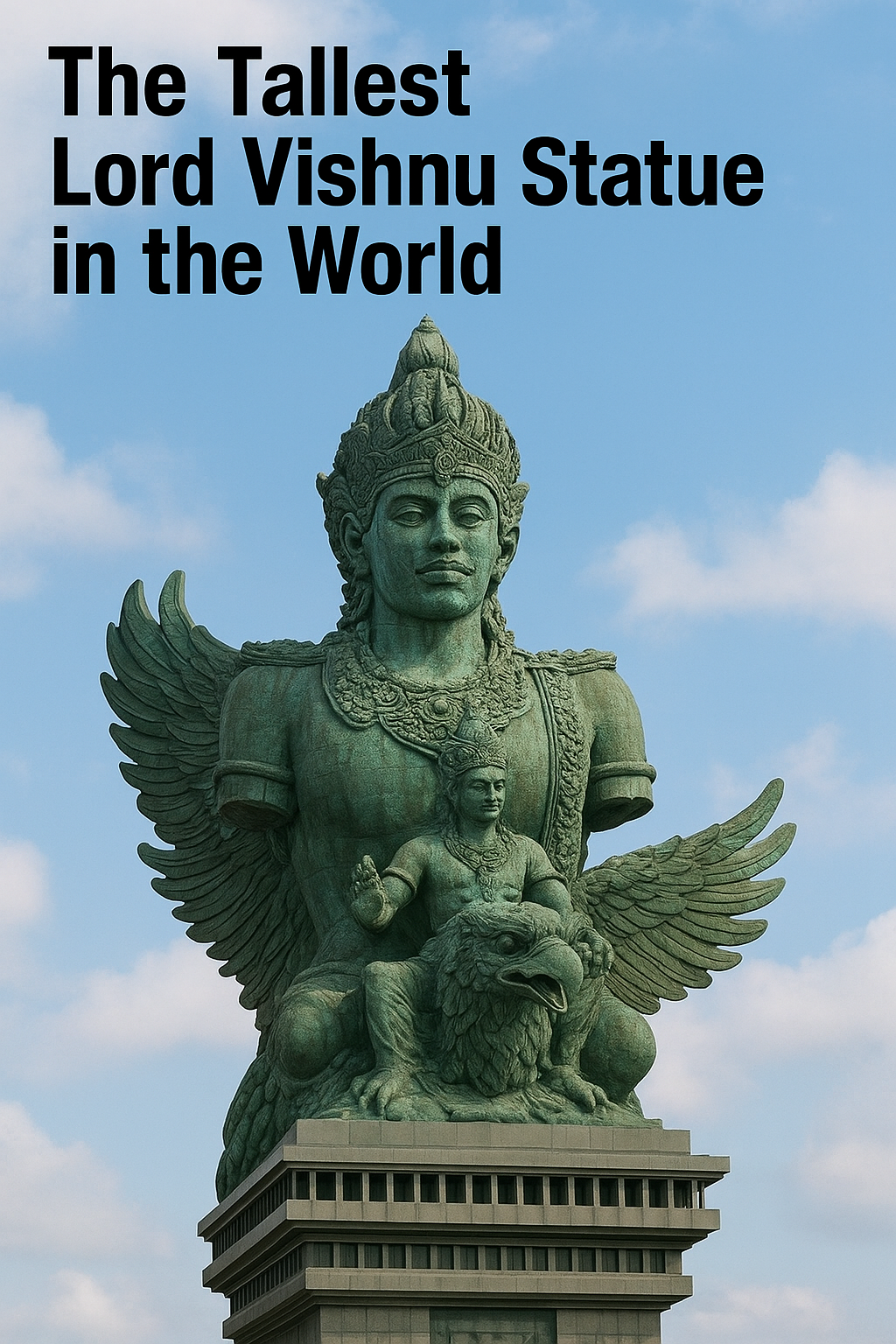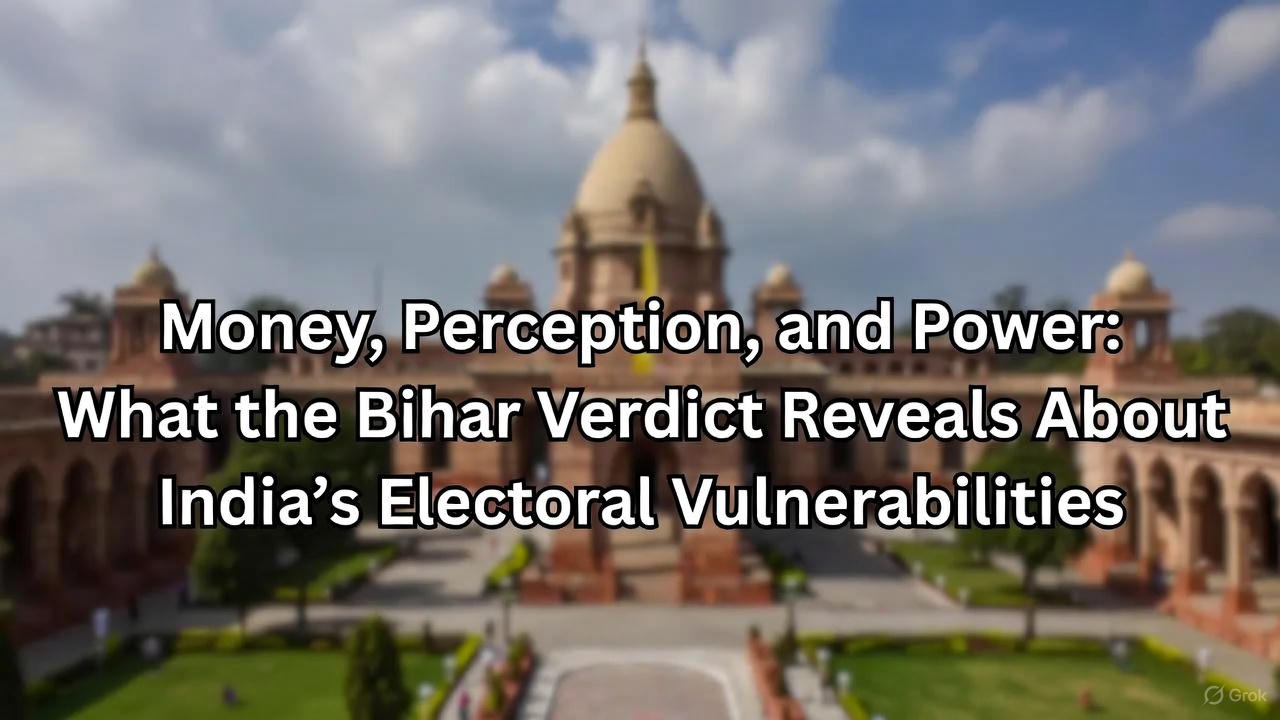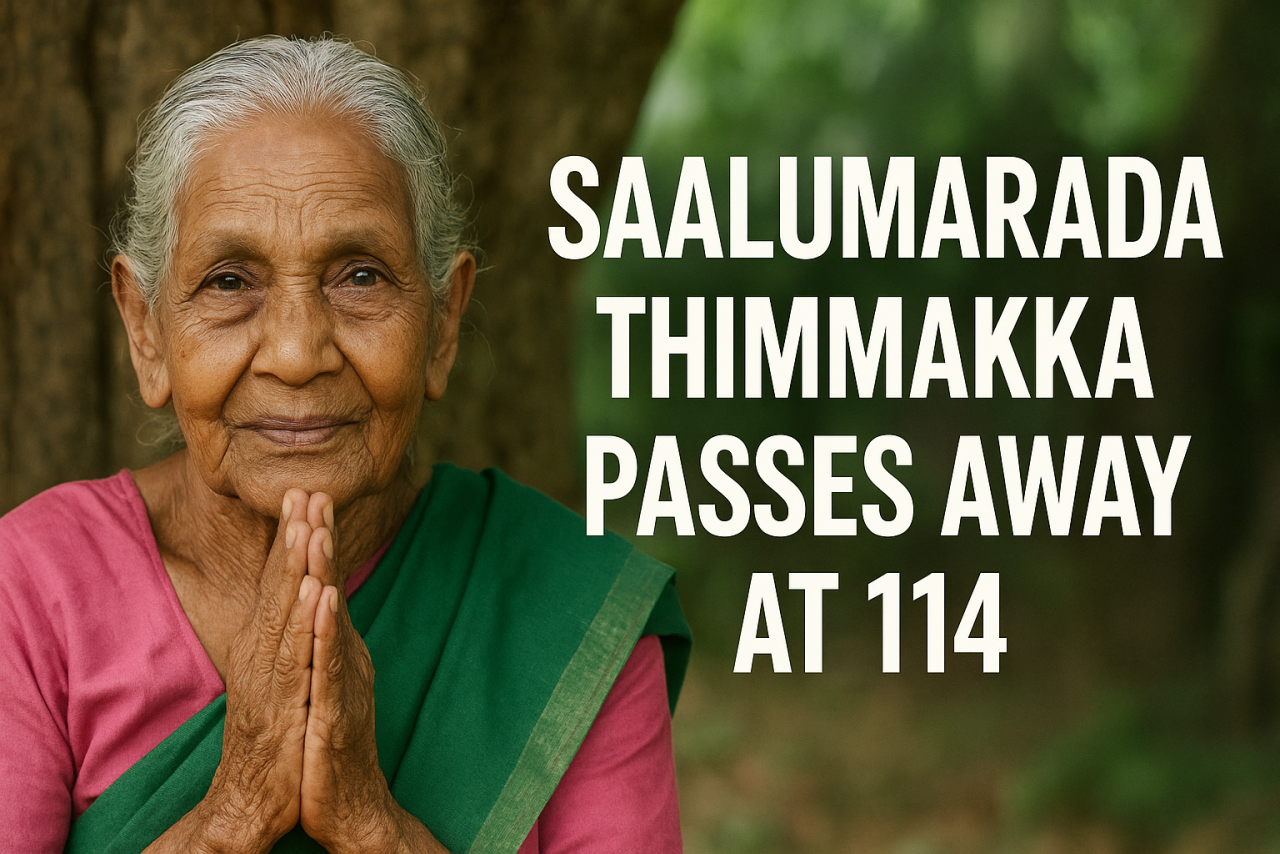
In the world of monuments and statues, size often becomes a measure of significance. Nations build towering figures to express culture, history and pride. While one may expect the tallest statue of Lord Vishnu to be in India, the land of its origin, the honour goes to a neighbouring country. It is in Bali, Indonesia, that the Garuda Wisnu Kencana statue rises above the landscape, taller than even the Statue of Liberty in the United States.
The statue, which was officially inaugurated in 2018, is a magnificent sight. At 121 metres in height, it is as tall as a 21-storey building. The statue shows Lord Vishnu, the preserver and protector in Hindu belief, seated on his mighty mount, the bird Garuda. The image is not just a religious symbol but also a part of Indonesia’s national identity, since Garuda is the official emblem of the country.
The story of how this statue came into being is as fascinating as the structure itself. The idea was conceived by Nyoman Nuarta, a famous Balinese sculptor. Construction began in 1997 with much enthusiasm. However, due to financial crises and political changes, the work stopped for several years. For a long time, the half-completed structure stood as a reminder of an unfinished dream. It was only in 2013 that efforts to complete it began again, and after five years of determined work, the statue was finally completed and inaugurated by President Joko Widodo.
The scale of the project is astonishing. The statue is made from copper and brass, supported by a steel and concrete framework. It weighs more than 4,000 tonnes. Engineers designed it to withstand earthquakes and strong winds, which are common in the region. Special joints were created so that the massive figure could remain stable even in difficult weather conditions. This makes the Garuda Vishnu Kencana not only a cultural landmark but also a marvel of modern engineering.
Beyond its physical structure, the statue carries deep symbolic meaning. In Hindu mythology, Garuda agreed to serve Lord Vishnu in exchange for the nectar of immortality to free his enslaved mother. This bond of loyalty and devotion is reflected in the statue. At the same time, Garuda also symbolises courage and freedom for Indonesia as a nation. Thus, the statue stands at the intersection of religion, culture and patriotism.
The statue is located in the Garuda Wisnu Kencana statue in South Bali. Spread over 60 hectares, the park is a centre for cultural performances, exhibitions and festivals. Tourists who visit the statue can also experience Balinese dance, traditional music and art displays. There are restaurants offering local food, open-air theatres for performances, and panoramic viewpoints that make the park a lively destination. For international visitors, the site is only a short drive from Bali’s main airport, which makes it easy to reach.
The park is open throughout the week, from morning till late at night. Entry tickets cost around IDR 150,000, which is roughly ₹800. The ticket includes access to cultural shows and other attractions within the park. Visitors often find the evenings most enchanting, when the statue is lit up dramatically against the night sky. The best months to visit are from April to October, which is the dry season in Bali.
For many Indians, there is a sense of surprise that such a grand statue of Lord Vishnu exists outside their own country. Yet this fact also shows the spread of Indian culture and beliefs across Asia centuries ago. Hinduism travelled with traders, priests and kings to regions like Indonesia, Cambodia and Thailand. Bali, in particular, has preserved its Hindu traditions, even though Indonesia is today the world’s most populous Muslim-majority nation. The Garuda Wisnu Kencana statue is a visible expression of this continuity.
When compared with other tall statues around the world, this monument holds its own place. The Statue of Liberty in New York is 93 metres tall, while the famous Christ the Redeemer in Rio de Janeiro stands at 38 metres. India’s own Statue of Unity, dedicated to Sardar Vallabhbhai Patel, is much taller at 182 metres, but it represents a modern political leader, not a deity. The Garuda Wisnu Kencana statue is unique in combining religious devotion with national symbolism on such a grand scale.
The statue has now become one of Bali’s most visited landmarks. For local people, it is a matter of cultural pride. For tourists, it is a reminder of how mythology, art and engineering can come together to create something extraordinary. And for Hindus around the world, it is a symbol of how their traditions continue to inspire beyond the borders of India.
The tallest statue of Lord Vishnu may not be in India, but its presence in Bali is a reminder of the shared cultural heritage of Asia. Rising high above the island, the figure of Vishnu on Garuda does more than dominate the skyline. It tells a story of faith, resilience and identity—one that connects past with present and inspires all who look up at it.





















